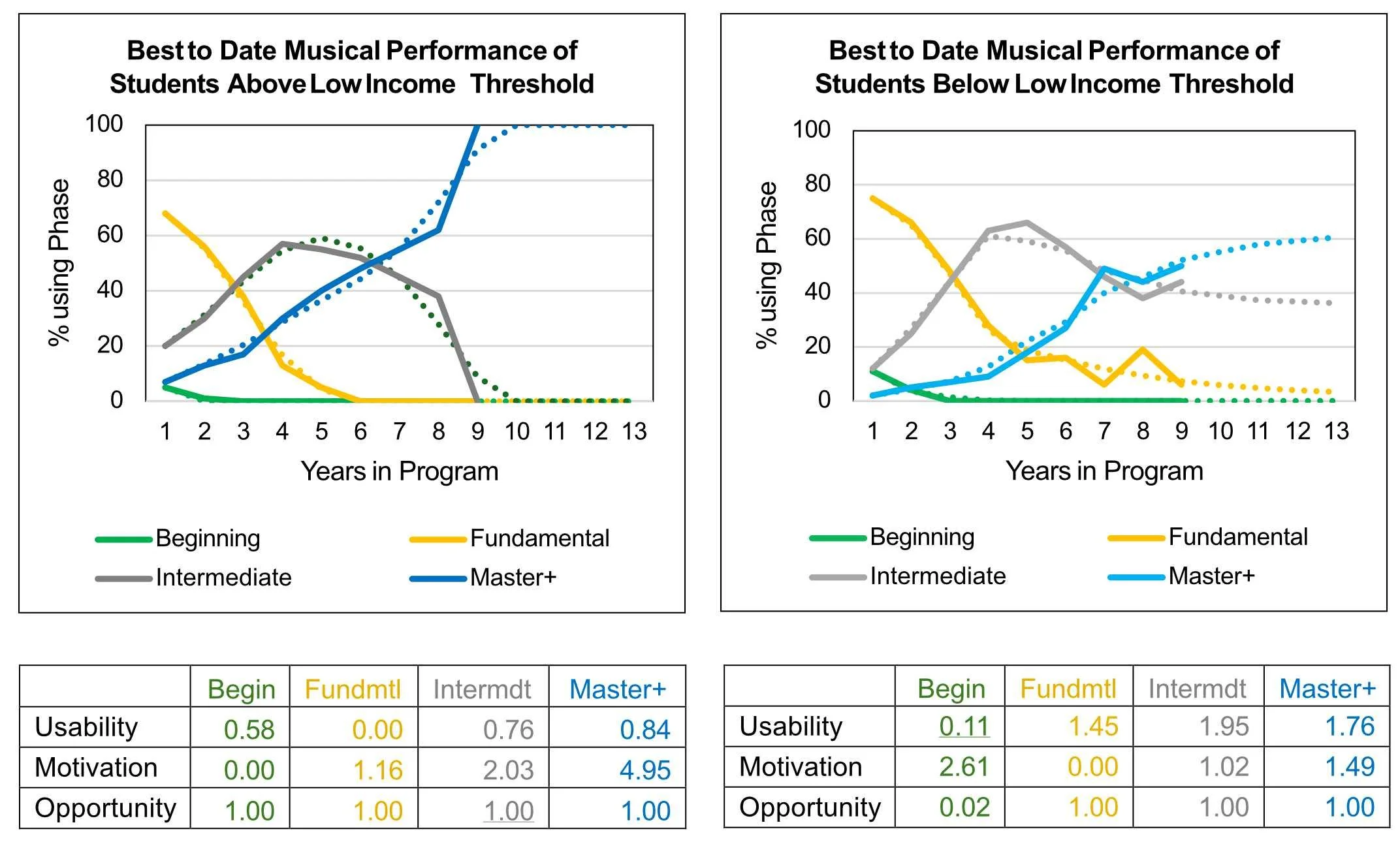
Inspire
We use the term “inspire” to refer to making discoveries and innovations that spread to others. The vast majority of discoveries have been made by science, but some very significant contributions to knowledge have been based on mathematical proof (e.g., the pythagorean theorem), interpretative persuasion (archetypal stories, internal consistency) and design usefulness (alphabets, printing press).
The Praxomics Project: Introduction and Results
The “Praxomics Project” refers to the scientific measurement of human practices. Its aim was to inspire discovery and innovation related to human behavior. The term was coined because other words that refer to fields claiming a similar goal, like psychology, omit some essential characteristics of science:
The scientific method requiresa community of trained users to systematically observe, identify, and organize naturally occurring events, so that they can reliably count and measure the events as well as create, test, and critique models for predicting and modifying such counts and measurements.
All biologists can identify genes, cells, species, and communities in the natural world and know that biological communities contain species, species contain cells, and cells contain genes, not the reverse. They also can loog up standard models for how genes affect counts and measures of cells, how cells affect counts and measures of species, and how species affect counts and measures of communities. Finally they test these models in simplified, easily studied systems of the biological world called microcosms. Darwin’s Galapagos Island Finches and Mendel’s garden peas are classic examples while Petri dish cultures, terrariums, aquariums, and Biosphere 2 are well-known modern microcosms.
Psychology has not yet developed classifications of naturally occurring behavior. The closest approximation is the effort by the American Psychological Association to create a Diagnostic and Statistical Manual for Mental Disorders. Psychology has developed and tested models of the speed and accuracy of artificial behaviors (made-up behaviors like key presses, nonsense-syllable recitation, and signal detection). But it has also created a crisis of replicability by adding unlike behaviors together instead of creating tools for organizing, analyzing, and modeling of behavior records. So called “standardized tests,” in particular, offer a single, numerical assessment that often influences the rest of a person’s life but is based on only a few hours of extremely limited behavioral responses to an enormous variety of artificially created stimuli most of which are unlike daily life experience.
Over the last six decades, the Praxomics Project has identified steps, phases, goals, and domains that can be reliably counted and measured. First, it involved identifying naturally occurring behaviors through behaviors with a natural record like drawing, writing, and published psychological research. The behaviors observed were derived from established theories like those of Lowenfeld and Piaget (for drawing), Moffett (for writing), and several historians of psychology.
More recently, expert ratings of unrecorded behaviors have been studied based on developmental interviews of over 350 experts. The interviewees defined goals and phases within their disciplines. Many of their descriptions are included in the Appendix of Teachers, Learners, Modes of Practice: Theory and Methodology for Identifying Knowledge Development. Their observations have been used to assess and develop programs in many educational institutions. The use of interviews brings the tools of interpretation and invention that have inspired the humanities into the praxomics project.
The praxomics project used records of the frequencies of phases to create an equation, called the succession model, which describes how phases affect goals. It also tested the model in several microcosms of human practices including school student drawing in Peru NY, elementary and high school writing in New York State and England, school music in southeastern Virgina, and research methods in the journals, Child Development and Developmental Psychology.
On the master page, we identified performance onset and performance time as basic measures of phases. Here we add four measures that determine how common a phase is in a microcosm and how the counts of such phases change over time. Those new measures are usability, motivation, and opportunity.
The succession model allows us to estimate values for the new measures in a microcosm. The estimates can be used to predict future performance and identify potential ways to improve learning.
Succession model predictions from the Soundscapes microcosm provide example
The Succession Model
The model assumes that the phases of a goal are numbered from 0 to 4 or 5. Nonuse is the 0 phase and the rest are beginning, exploring, sustaining, mastering, and inspiring, respectively.
The proportion of people using the Xi phase in a goal at a particular time period (Xi’) depends on its use in the previous time period (Xi) as modified by the following equation:
Xi’ = Xi [1+Ui (1-Xi/ Oi) – ΣMjXj], where all values are > 0 and
Xj = current proportion of the jth phase of a goal, i ≠ j,
Ui = Usability of Xi,
Mj = Motivation levels of the Xj, and
Oi = Opportunity of Xi, Oi <= 1
Predictions
from the Soundcapes microcosm
In the charts below, the solid lines are the actual data while the dotted lines are the values that create the best fit using the succession model. The actual data ends at 9 years while the values for the dotted lines are the predictions using the succession model.
The succession model clearly predicts different long-term outcomes for students from households living below the low income threshold. This finding is consistent with national data showing that low income students do not recover from the learning loss due to COVID.
When Soundscapes Program Director, Rey Ramirez, first looked at the huge differences in the Motivation value (M), he immediately focused on the issue of private lessons. Soundscapes is now working on ways to make private lessons more accessible to this most impoverished group.


